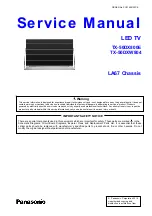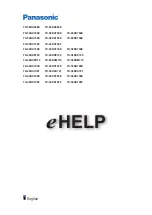
3DQDVRQLF
46
17.5.3.Chrominance Processing
The second path that the digitised composite video
signal is fed to is the chrominance processing circuit.
First of all the video signal is fed via multiplexer1
before being fed via an I.F. compensation circuit
which is used to compensate for distortions which
may arise due transmission.
After the I.F. compensation stage the video signal is
fed to the following mixer stage. Here the entire
signal
is
now
quadrature-mixed
to
baseband
frequency, this mixed frequency being equal to the
sub-carrier for PAL and NTSC thus achieving
chroma demodulation. For SECAM however the
quadrature mixed frequency is 4.286MHz equalling
the quadrature baseband components of the FM
modulated chroma.
After the mixer stage the
signals are fed via a downsampling stage which
converts the colour difference signals to multiplexed
half rate data stream.
The sub-carrier frequency in the demodulator which
is generated by direct digital synthesis which allows
substandards such as PAL 3.58MHz or NTSC
4.43MHz to also be demodulated.
After the demodulation stage the colour difference
signals for PAL/NTSC are fed via a lowpass filter,
while SECAM signals are fed via a Bell filter. At the
output of both these filters all luma information is
eliminated. The chroma component is then fed via a
Burst Detection circuit.
In the PAL/NTSC system the burst is the reference
for the colour signal. The phase and magnitude of
the colour burst signal being used as a control pulse
for the APC circuit, colour killer circuit and the
automatic colour control (ACC) stage which has a
control range of +30 to -6dB.
During SECAM decoding the frequency of the burst
is measured, thus the chroma carrier frequency can
be identified and used to control the SECAM
processing.
From the burst detection stage the chroma signals
are fed via a 1H Delay line. The delay line
application depends on the colour standard:
:
PAL / NTSC: colour compensation
:
SECAM: crossover-switch
When a PAL/NTSC signal is being processed the
1-H delay line performs colour compensation. This is
used to reduce cross colour distortion and chroma
noise.
When processing a SECAM signal the 1-H delay line
is used in-conjunction with the cross-over switch.
The cross-over switch which is controlled by the bell
filter is used to prevent incorrect switching of the R-Y
and B-Y signals, by means of a delayed and
un-delayed signal. The cross-over switch inverts the
signal producing a standard R-Y and B-Y signal.
The chroma signals are then fed to the following
Scaler stage.
17.5.4.S-VHS processing
When processing the S-VHS luminance signal, the
notch filter is switched off and this allows the S-VHS
(Y) signal to pass through to the next stage via the
buffer amplifier.
The S-VHS chrominance signal is input and fed via
multiplexer 1, where the chrominance signal then
follows
the
chrominance
processing
already
discussed.
Summary of Contents for EURO 4 Chassis
Page 24: ...3DQDVRQLF 24 ...
Page 26: ...3DQDVRQLF 26 TV STANDARDS ...
Page 93: ...3DQDVRQLF 10 ...
Page 97: ...3DQDVRQLF 14 Chapter 2 EURO 4 Supplement P Board DAF Circuit ...
Page 101: ...3DQDVRQLF 18 ...
Page 121: ...3DQDVRQLF 38 Chapter 3 EURO 4H Supplement Y Board Schematic ...
Page 124: ...3DQDVRQLF 41 ...
















































